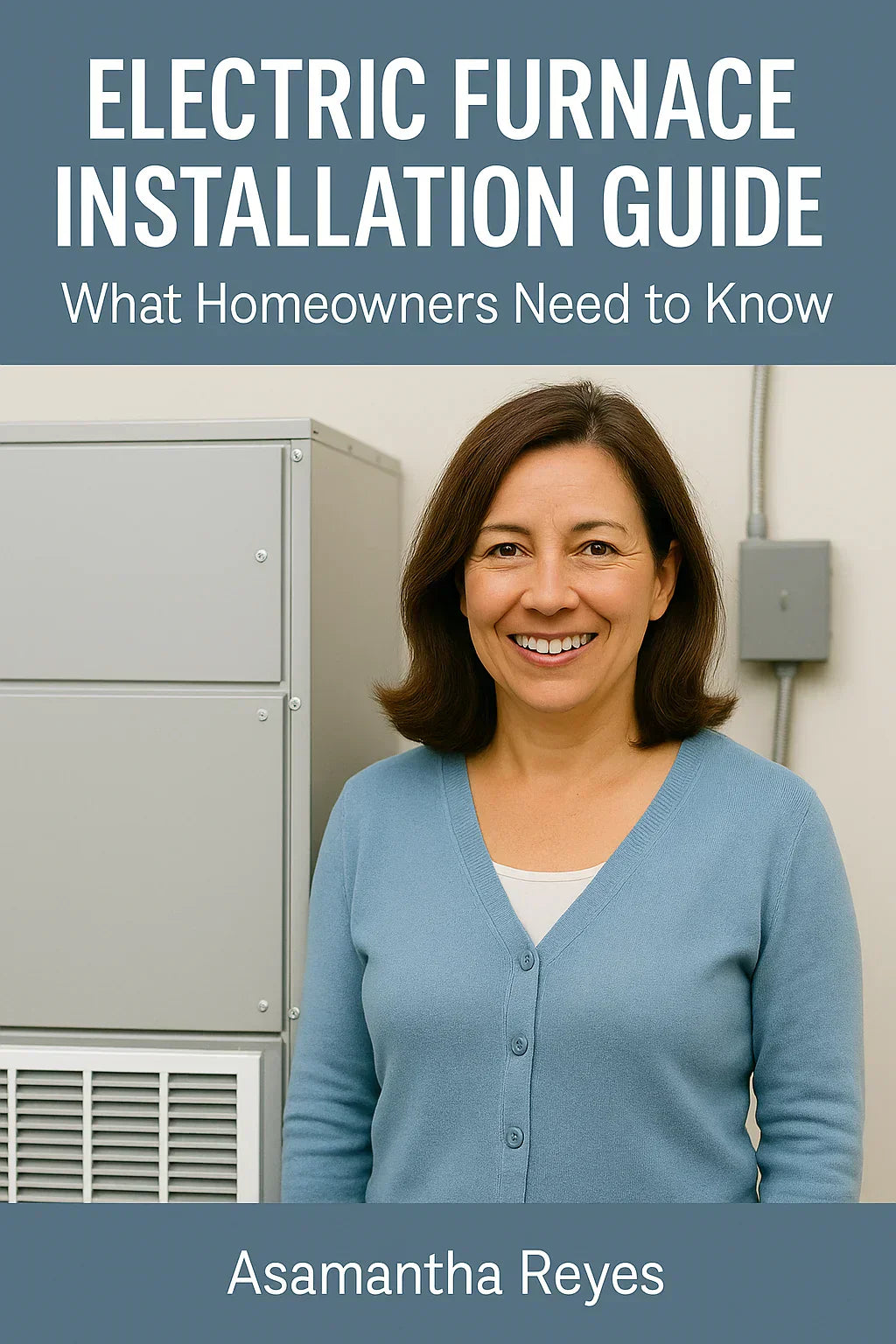Why This Guide Matters
Installing an electric furnace is an investment in your home's comfort, safety, and energy efficiency. Samantha Reyes and homeowners like her can use this guide to understand preparation, costs, safety, and what to expect, ensuring a smooth upgrade.
🔍 Understanding Electric Furnace Basics
An electric furnace uses heating elements to warm air, which is then distributed throughout your home via ductwork. It requires a compatible electrical panel, proper clearances, and ventilation to operate efficiently and safely.
📝 Pre-Installation Checklist
✅ Assess your home’s heating needs (size, climate).
✅ Check your electrical panel capacity (most require 60–80 amp breakers).
✅ Measure space for the furnace and clearances.
✅ Inspect ductwork for leaks and sizing compatibility.
✅ Obtain any required local permits.
⚡ Electrical Requirements
Electric furnaces need:
-
A dedicated high-voltage circuit (typically 240 volts).
-
Sufficient amperage (consult your electrician).
-
Proper grounding for safety.
A licensed electrician should evaluate your panel to confirm compatibility before installation.
Learn more from Electrical Safety Foundation International.
🏗️ Installation Steps
-
Disconnect Power: Ensure your electrical panel is safely shut off.
-
Position the Furnace: Place on a stable, level platform with required clearances.
-
Connect Ductwork: Securely attach supply and return ducts.
-
Wiring Connections: Wire the furnace to the electrical panel with appropriate gauge wiring.
-
Thermostat Connection: Connect and test the thermostat control.
-
Test Operation: Restore power, run the furnace, and test airflow and heat output.
Note: Always hire a licensed HVAC professional to ensure safety and code compliance.
💰 Cost of Electric Furnace Installation
-
Unit Cost: $800 – $2,500 depending on BTU and brand.
-
Labor Cost: $1,200 – $2,500 depending on complexity and region.
-
Electrical Upgrades: $500 – $1,500 if your panel requires upgrades.
-
Total Estimate: $2,500 – $6,500 on average.
Check with your utility for rebates or incentives, which can reduce upfront costs.
🛡️ Permits and Code Compliance
Most areas require permits for furnace installation to ensure electrical and fire safety compliance. Failing to secure permits may:
-
Void insurance coverage in case of fire.
-
Cause safety hazards.
-
Create issues during home resale.
Check your local building department or International Code Council for regional requirements.
🌬️ Ductwork Considerations
-
Inspect for Leaks: Sealing leaks improves efficiency.
-
Sizing Matters: Properly sized ducts ensure balanced airflow.
-
Cleaning: Consider a duct cleaning before connecting a new furnace.
Read more about duct sealing at Energy Star.
🪟 Space and Clearance Requirements
Electric furnaces need:
-
At least 30 inches of clearance in front for servicing.
-
Adequate clearance on all sides as per the manufacturer’s guidelines.
-
Proper drainage if paired with a humidifier.
Follow your furnace’s manual for exact requirements.
🛠️ DIY vs. Professional Installation
DIY Installation: ❌ Not recommended unless you are licensed and experienced.
❌ Electrical work requires code knowledge and tools.
❌ Mistakes can lead to fire and safety hazards.
Professional Installation:
✅ Ensures code compliance and safe electrical connections.
✅ Correct ductwork integration.
✅ Provides warranty and quality assurance.
🌱 Post-Installation Tips for Efficiency
-
Use a programmable or smart thermostat.
-
Replace filters regularly.
-
Seal and insulate ducts.
-
Maintain clear space around the furnace.
-
Schedule annual inspections.
See the Department of Energy’s HVAC efficiency tips for additional guidance.
✅ Final Checklist Before Turning On Your Electric Furnace
✅ Electrical connections secure and tested.
✅ Ductwork properly attached with no leaks.
✅ Thermostat connected and programmed.
✅ Clearances verified.
✅ Furnace cycles correctly with warm airflow.
🔗 Next Steps
-
Shop for electric furnaces at The Furnace Outlet.
-
Contact a licensed HVAC contractor for an installation quote.
-
Schedule a panel evaluation with a licensed electrician.
-
Apply for rebates to lower your upfront costs.
Installing an electric furnace can be a seamless, energy-efficient upgrade when you follow the right steps, ensuring your home stays warm, safe, and comfortable for years to come.
In the next topic we will read more about: How Much Does an Electric Furnace Cost in 2025? Real-World Pricing Guide







